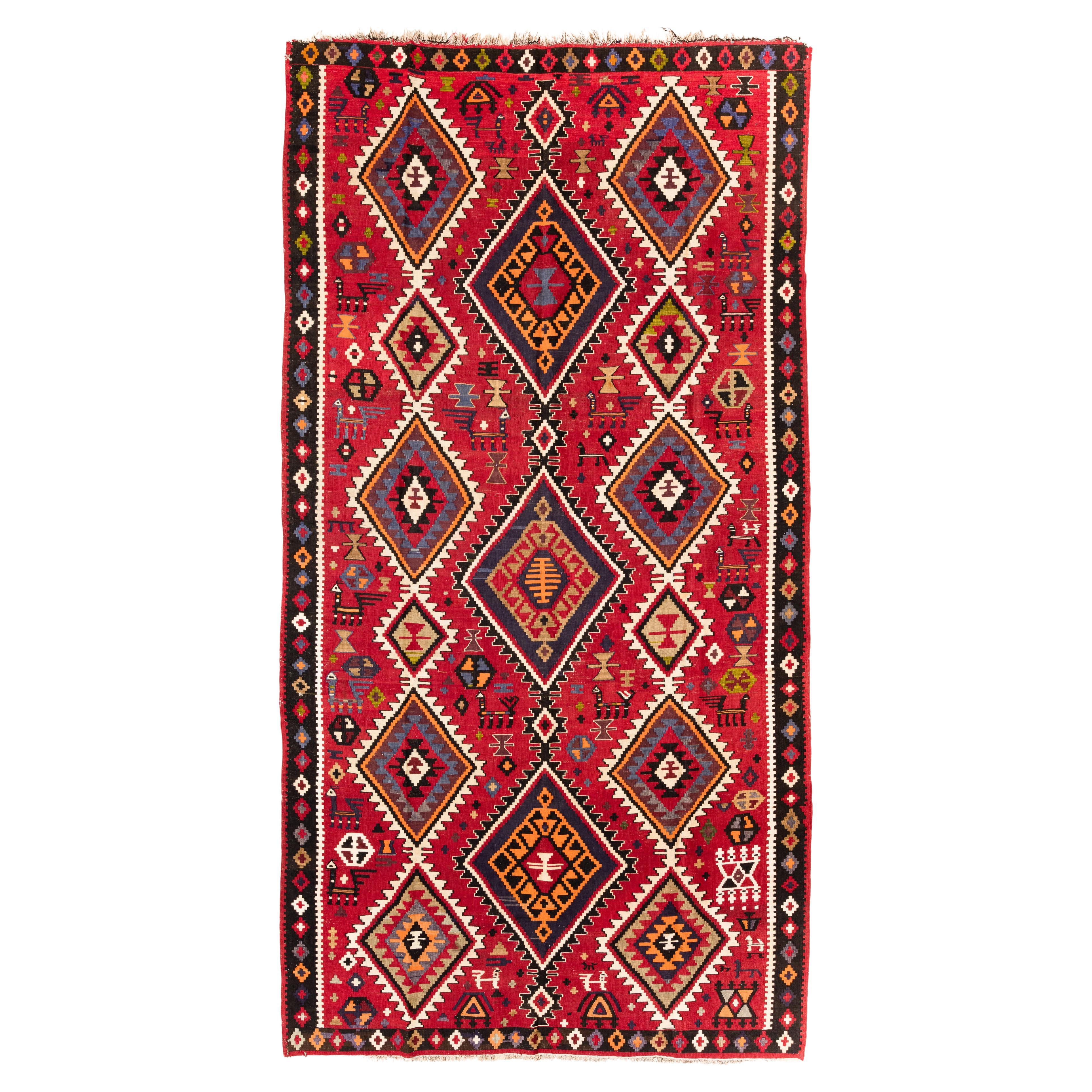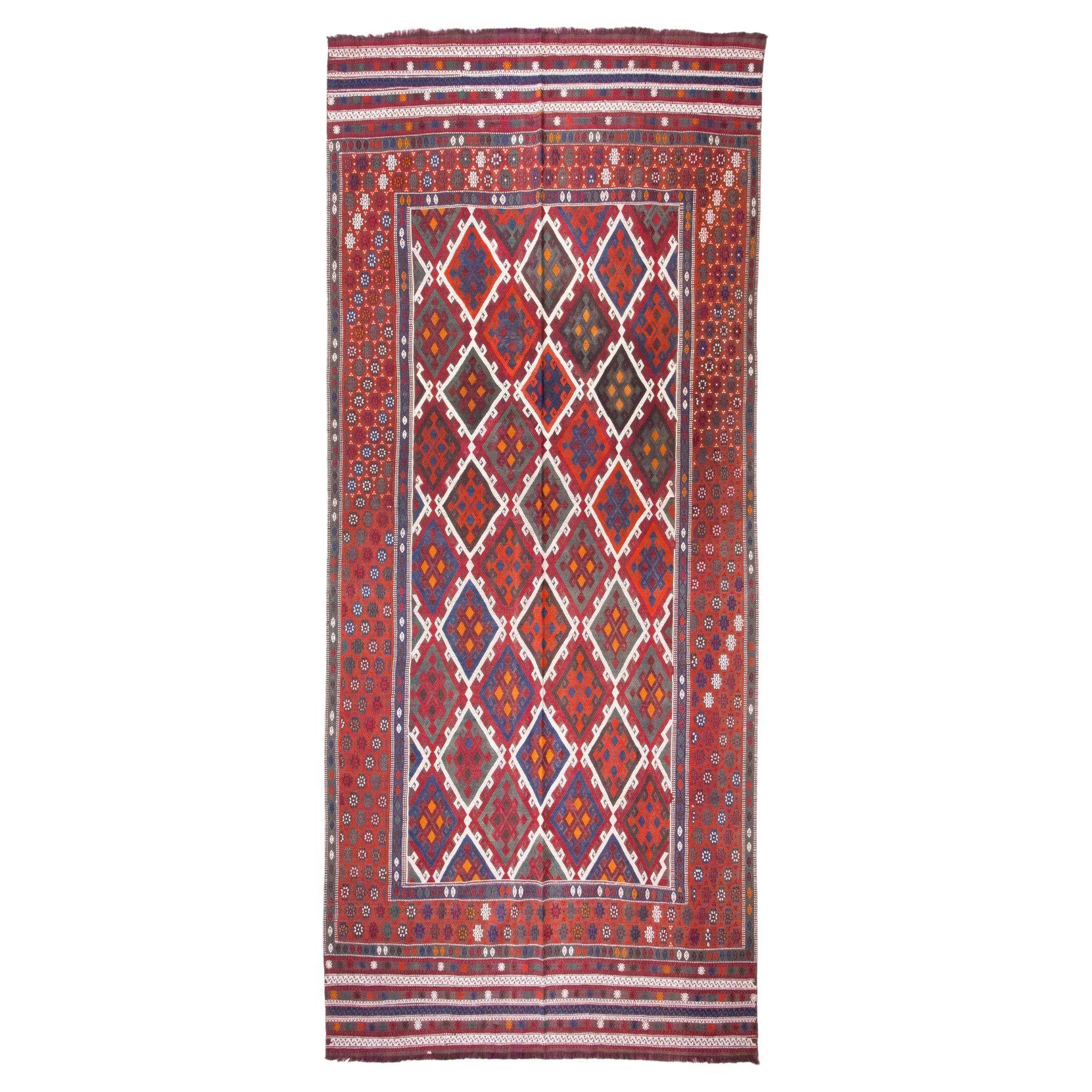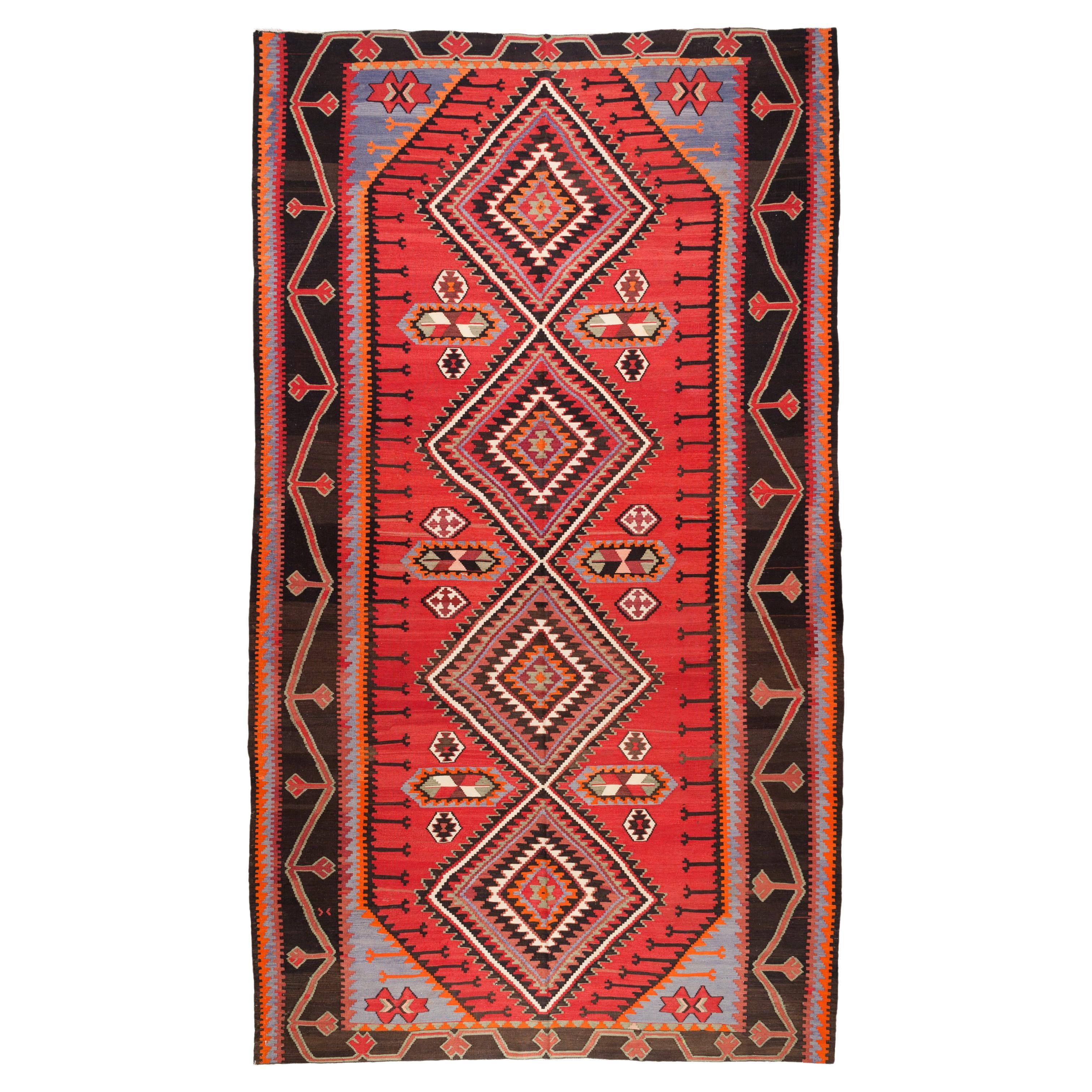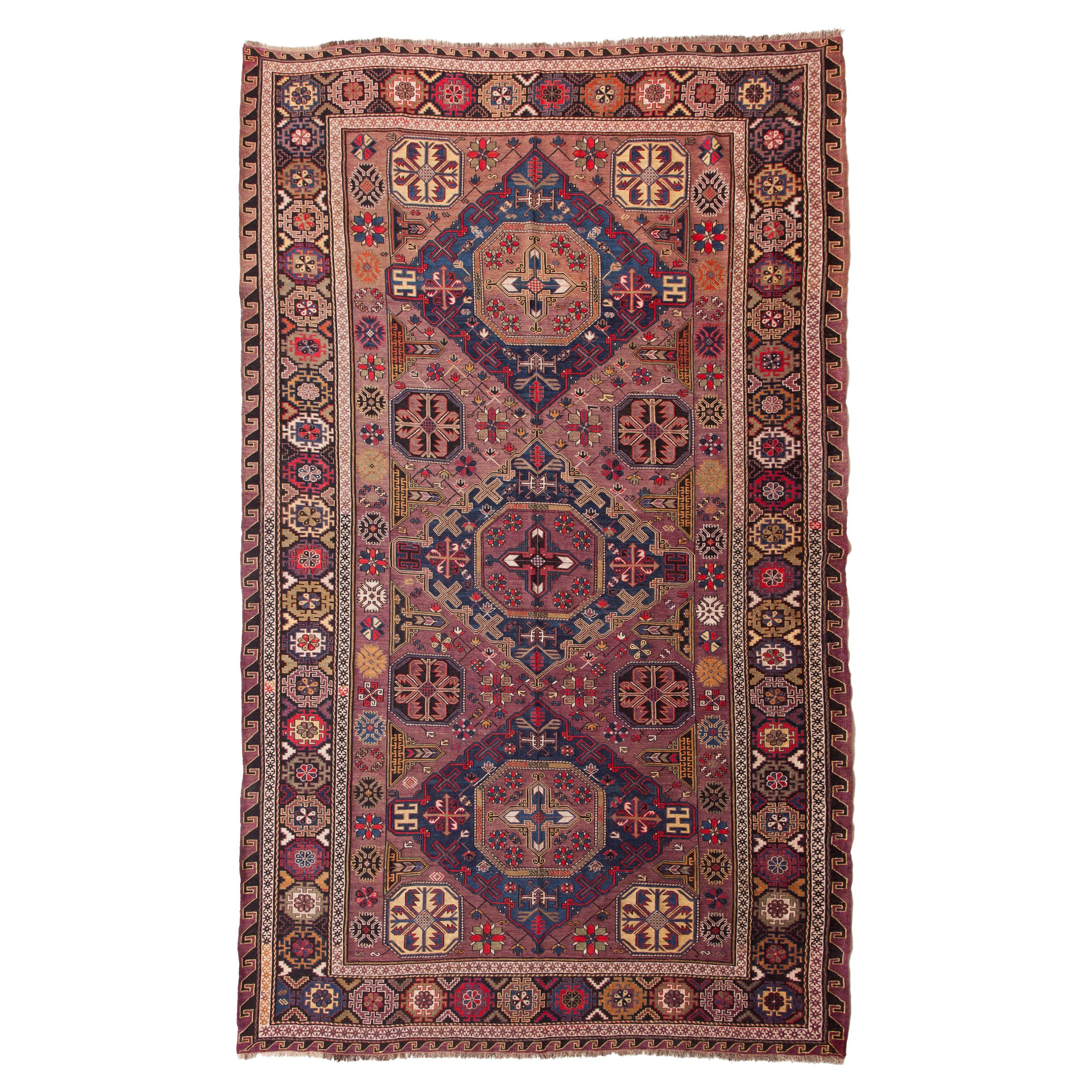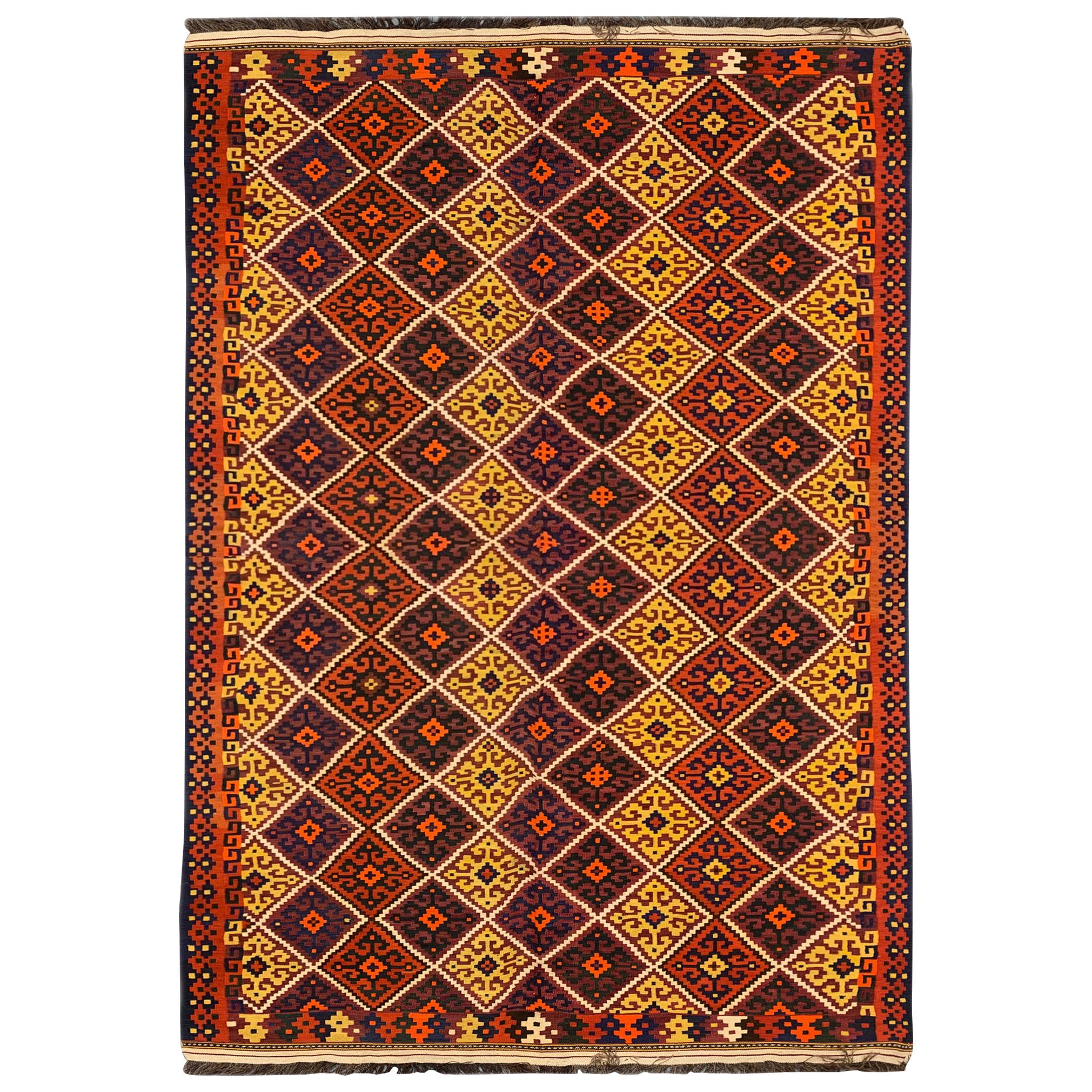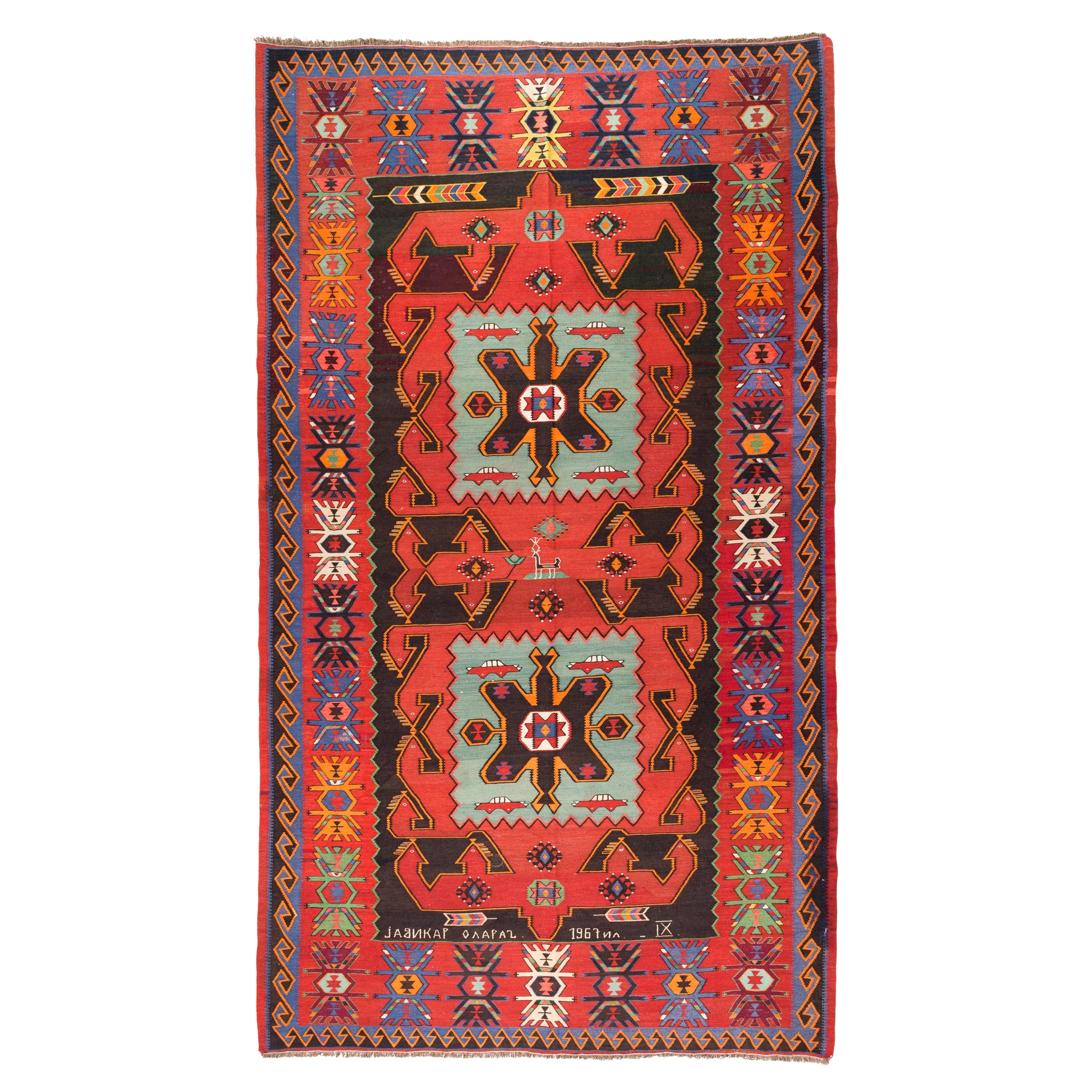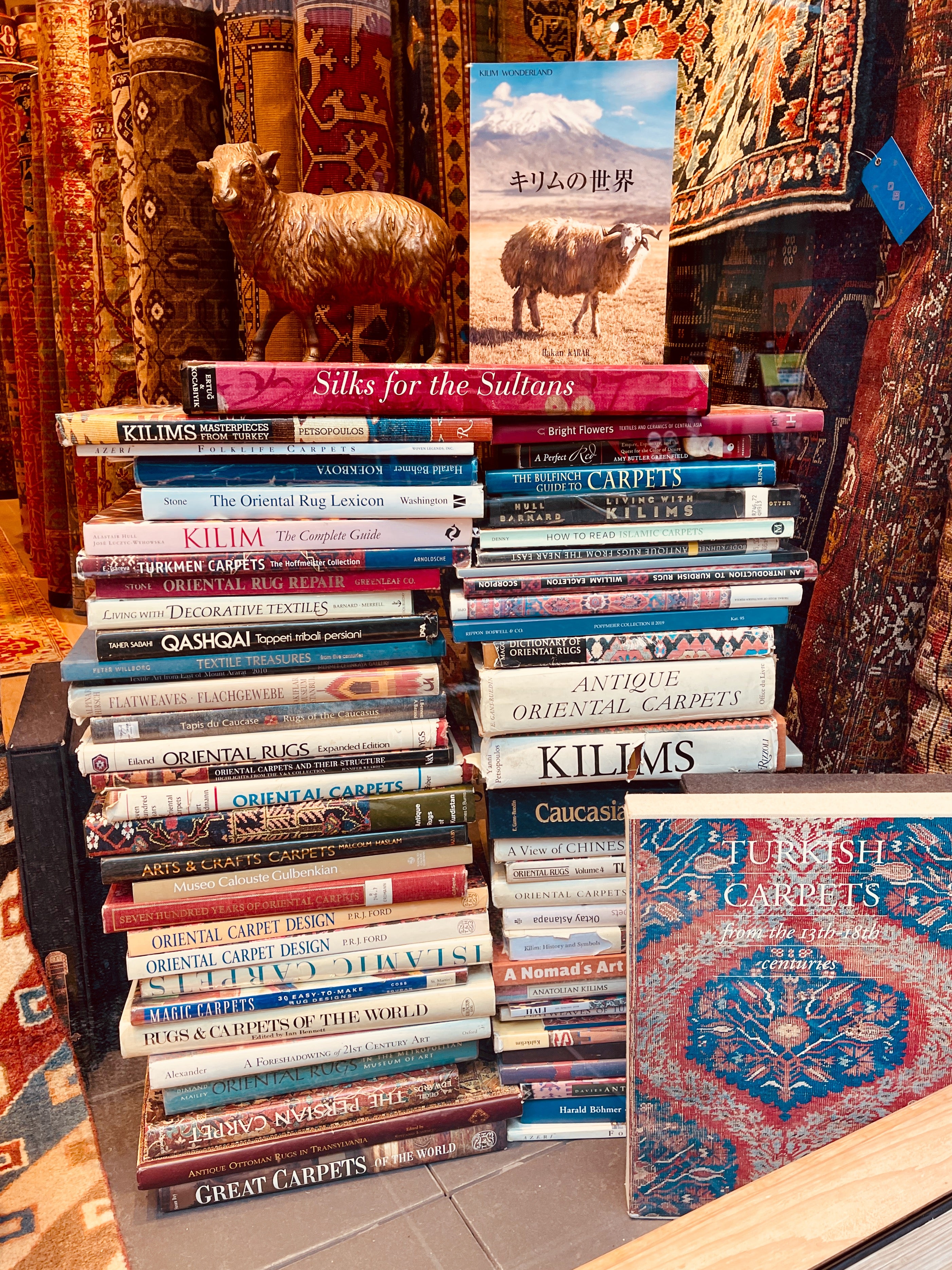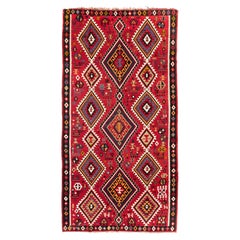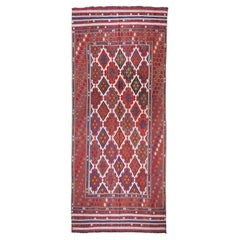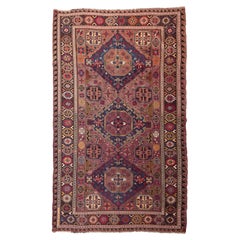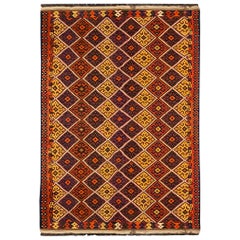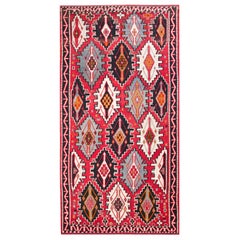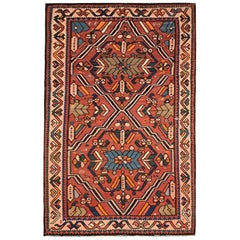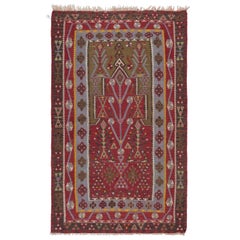Items Similar to Antique Caucasus Talish Kilim Rug, Caucasian Carpet
Want more images or videos?
Request additional images or videos from the seller
1 of 10
Antique Caucasus Talish Kilim Rug, Caucasian Carpet
$14,200
£10,774.63
€12,319.83
CA$19,833.55
A$22,052.21
CHF 11,514.45
MX$268,429.08
NOK 146,919.32
SEK 137,656.39
DKK 91,945.16
Shipping
Retrieving quote...The 1stDibs Promise:
Authenticity Guarantee,
Money-Back Guarantee,
24-Hour Cancellation
About the Item
This is a large Antique Talish Kilim from the Caucasus region with a rare and beautiful color composition.
Of the four countries that make up the Caucasus, Azerbaijan produces the most kilims, and the land has a long history of weaving. The nomadic tribes wove kilims and carpets as well as a wide range of storage bags and sacks, such as saffrash, khurgin, and chula, and donkey and horse trappings. Smaller bags for salt, utensils, and other items are also common. Not only are the Azerbaijani weavers prolific, but they also employ many techniques at the loom. These include slitweave- known locally by the word kilim, warp-faced patterning (jajim), supplementary weft (zili), weft wrapping (popularly known as soumak), and extra weft wrapping (verneh). Furthermore, flatweaves are defined by regional names such as palas and shadda, so it is possible to ascribe a variety of weaving names to particular provenances as follows: soumaks are made in Kuba, palas, and kilims in Hajikabul, zili in Khizy, verneh and zili in Kazakh, shadda, verneh and zili in Barda, jajim in Agjabedi, and palas and kilims in Jabrail.
- Dimensions:Width: 66.15 in (168 cm)Length: 131.5 in (334 cm)
- Style:Kilim (In the Style Of)
- Materials and Techniques:
- Place of Origin:
- Period:
- Date of Manufacture:circa 1920s
- Condition:Wear consistent with age and use. Minor structural damages. Minor fading.
- Seller Location:Tokyo, JP
- Reference Number:1stDibs: LU8206238253462
ARARAT RUGS
We know and believe that the geography we come from, our past, and our lifestyle are the most important bond between us to carry the oriental carpet art and culture to the next generations along with our core values in our ongoing growth journey.
We are aware that the way to achieve this goal and carry this priceless art and culture to the future depends on a lot of work with all our people every day while adhering to our core values.
For us, art is meaningful in the sense that it brings together various cultures around the world. It is an honor for us that oriental carpet art and culture have been instrumental in this for centuries and that we are a part of this business.
We are tirelessly keeping an eye on auction house information around the world about carpets. New York's Metropolitan, London's Victoria & Albert Museums, and other famous art museums, as well as small specialized museums that house private collections, and books about oriental carpets to collect information on outstanding carpet designs and patterns from around the world. It's our Self-improving and Self-developing culture.
As Turkish Culture of Hospitality, the Kurdish Culture of Generosity, and as Japanese Culture of Business Punctuality; are the most important values that this multicultural background has taught and bequeathed to us. It is essential and valuable for us that you feel this feeling not only by looking at our oriental carpets but from the moment you contact us.
About the Seller
5.0
Platinum Seller
Premium sellers with a 4.7+ rating and 24-hour response times
Established in 1970
1stDibs seller since 2023
55 sales on 1stDibs
Typical response time: 3 hours
- ShippingRetrieving quote...Shipping from: Tokyo, Japan
- Return Policy
Authenticity Guarantee
In the unlikely event there’s an issue with an item’s authenticity, contact us within 1 year for a full refund. DetailsMoney-Back Guarantee
If your item is not as described, is damaged in transit, or does not arrive, contact us within 7 days for a full refund. Details24-Hour Cancellation
You have a 24-hour grace period in which to reconsider your purchase, with no questions asked.Vetted Professional Sellers
Our world-class sellers must adhere to strict standards for service and quality, maintaining the integrity of our listings.Price-Match Guarantee
If you find that a seller listed the same item for a lower price elsewhere, we’ll match it.Trusted Global Delivery
Our best-in-class carrier network provides specialized shipping options worldwide, including custom delivery.More From This Seller
View AllCaucasia Kuba Old Kilim Rug, Vintage Caucasian Carpet
Located in Tokyo, JP
This is a large, Caucasian Old Kilim from the Kuba region with a red background and beautiful color composition.
Kuba kilims are often decorated with large abstract indented medal...
Category
Mid-20th Century Caucasian Kilim Caucasian Rugs
Materials
Wool, Natural Fiber, Cotton
Antique Caucasus Verneh Kilim Rug, Caucasian Carpet
Located in Tokyo, JP
This is a large Antique Verneh Kilim from the Caucasus region with a rare and beautiful color composition.
Of the four countries that make up the Caucasus, Azerbaijan produces the...
Category
Early 20th Century Caucasian Kilim Caucasian Rugs
Materials
Wool, Natural Fiber
Caucasus Kuba Fine Kilim Vintage Old Rug, Caucasian Natural Carpet
Located in Tokyo, JP
This is a Caucasian Old Kilim from the Kuba region with a red background and beautiful color composition.
Kilim of Kuba, a city in Azerbaijan. It is located by the Caspian Sea, ne...
Category
Mid-20th Century Caucasian Kilim Caucasian Rugs
Materials
Natural Fiber, Wool
$1,560 Sale Price
20% Off
Free Shipping
Antique Caucasus Soumak Kilim Sumac Rug, Caucasian Natural Carpet
Located in Tokyo, JP
This is a large Antique Soumak ( Sumak, Sumac ) Kilim from the Caucasus region with a rare and beautiful color composition.
Of the four countries that make up the Caucasus, Azerbaijan produces the most kilims, and the land has a long history of weaving. The nomadic tribes wove kilims and carpets as well as a wide range of storage bags and sacks, such as saffrash, khurgin and chula, and donkey and horse trappings. Smaller bags for salt, utensils, and other items are also common. Not only are the Azerbaijani weavers prolific, but they also employ many techniques at the loom. These include slitweave- known locally by the word kilim, warp-faced patterning (jajim), supplementary weft (zili), weft wrapping (popularly known as soumak), and extra weft wrapping (verneh). Furthermore, flatweaves are defined by regional names such as palas and shadda, so it is possible to ascribe a variety of weaving names to particular provenances as follows: soumaks are made in Kuba, palas, and kilims in Hajikabul, zili in Khizy, verneh and zili in Kazakh, shadda, verneh and zili in Barda, jajim in Agjabedi, and palas and kilims in Jabrail.
Soumak weave is a technique in which new weft threads are added to a plain weave fabric, and one or two warp threads are wound from the front to the back. The resulting kilim is denser and firmer, giving it a unique feel and look. This technique is commonly used in the Caucasus region.
Soumak Kilims have a very beautiful contrast between orange that shines like the sun, deep purple-tinged indigo, and astringent dark red. You can also see the unevenly dyed abrage in this sumac, which is like a magic carpet with an oriental atmosphere.
Features of the Caucasian kilim, such as the unique cosmic geometric floral pattern, are also found in this Soumak. It has a bright look, but it also has a faded and textured feel, so it can be used in a good old atmosphere. The woven fabric is particularly solid, so it is recommended for use in a solid living room or under a dining table without moving or twisting. A nice kilim under a long wooden dining table.
Category
Early 20th Century Caucasian Kilim Caucasian Rugs
Materials
Wool, Natural Fiber
Caucasia Kuba Kilim Rug, Vintage Old Caucasian Carpet
Located in Tokyo, JP
This is a large, Caucasian Old Kilim from the Kuba region with a red background and beautiful color composition.
This Kilim is from Kuba, a city in Azerbaijan in the Caucasus regi...
Category
Mid-20th Century Caucasian Kilim Caucasian Rugs
Materials
Wool, Natural Fiber
$3,360 Sale Price
20% Off
Antique Aksaray Kilim Rug Wool Old Central Anatolian Handwoven Turkish Carpet
Located in Tokyo, JP
This is Central Anatolian Antique Kilim from the Aksaray region with a rare and beautiful color composition.
The beauty of the dyeing, the quality of the wool (thread), the splendor...
Category
Early 20th Century Turkish Kilim Turkish Rugs
Materials
Wool, Natural Fiber
You May Also Like
Rare Antique Caucasian Kilim Rug
Located in Wembley, GB
This antique Kilim features a fantastic geometric design. Diamonds with hook motifs decorate this piece woven in varying colours of purple, brown, orange and yellow. Both the design ...
Category
Antique 17th Century Caucasian Tribal Central Asian Rugs
Materials
Wool, Cotton, Organic Material
$8,226 Sale Price
20% Off
Antique Caucasian Kilim Rug 6' 0" x 11' 8"
Located in New York, NY
Antique Caucasian - Kilim rug, size: 6'0" x 11'8".
Category
Antique Early 1900s Caucasian Caucasian Rugs
Materials
Wool
Rare Antique Caucasian Kilim Rug
Located in Wembley, GB
This handwoven antique Kilim was constructed in 1920 with fine hand-spun wool. The design features a double medallion in the centre and a detailed surround with smaller motifs and a ...
Category
20th Century Caucasian Tribal Central Asian Rugs
Materials
Wool, Cotton, Organic Material
$3,510 Sale Price
20% Off
3.7x6.2 Ft Hand-Woven Turkish Kilim. 100% Wool. Vintage Flat-Weave Rug
Located in Spring Valley, NY
Embark on a journey through Turkish tradition with this exquisite vintage handwoven Turkish wool kilim rug, a testament to the enduring craftsmanship of Anatolian artisans. Woven wit...
Category
Vintage 1970s Turkish Kilim Turkish Rugs
Materials
Wool
Traditional Kilims Geometric Handmade Carpet Vintage Kilim Rug
Located in Wembley, GB
This beautiful tribal Kilim Rug features a rustic colour palette including brown, cream green and beige. These elegant colours have been woven by hand into an asymmetrical diamond medallion central design with a layered repeat pattern border. Woven with the finest hand-spun wool.
Kilim rugs are flatwoven and so have no pile- this makes them extremely hard-wearing and perfect for any room in your home or office.
This tribal rug is sure to make the perfect accent piece in any room. The traditional techniques and patterns revealed to make this area rug one of the most popular styles, with interior designers, are in our shop.
Perfect for use as a bedroom rug, living room rug, entranceway rug, or rug for your dining room or kitchen.
Traditional Kilims handmade carpet...
Category
1990s Afghan Kilim Central Asian Rugs
Materials
Wool, Cotton, Natural Fiber, Organic Material
$493 Sale Price
20% Off
Antique Kilim Rugs for Sale Caucasian Kilims Carpet
Located in Wembley, GB
This fine, handwoven Caucasian Kilim was constructed in Azerbaijan and featured a fantastic tribal motif design. The central design has been woven on a red field and features, cream,...
Category
Mid-20th Century Azerbaijani Tribal Central Asian Rugs
Materials
Wool, Cotton, Organic Material
More Ways To Browse
Horse Carpet
Antique Rug Looms
Donkey Antique
Antique Weaving Loom
Kilim Storage
Kazakh Rug
Large Soumak Rug
Vintage Metal And Leather Chairs
Metal Black Dining Chair
Modern Organic Dining Chair
Tiered Side Table
Danish Coffee Tables Vintage
English Country House
Solid Silver Table
Used Beige Sofa
Vintage Black And Gold Glasses
Antique Copper Plates
Modern Wood Pedestal
